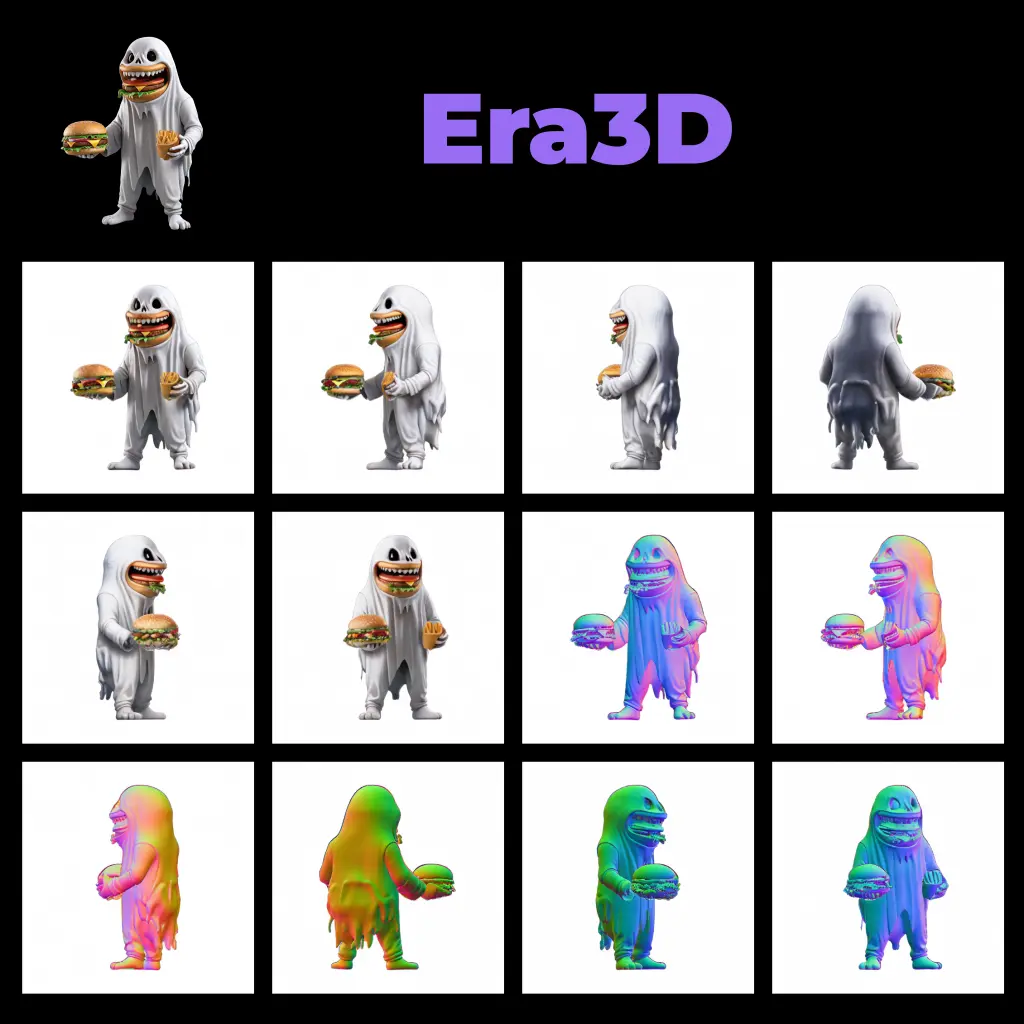ComfyUI Extension: ComfyUI MotionDiff
ComfyUI-MotionDiff
Fannovel16 (Account age: 3416 days) Nodes
View all nodes(20) Latest Updated
2024-08-01 Github Stars
0.2K
How to Install ComfyUI MotionDiff
Install this extension via the ComfyUI Manager by searching for ComfyUI MotionDiff- 1. Click the Manager button in the main menu
- 2. Select Custom Nodes Manager button
- 3. Enter ComfyUI MotionDiff in the search bar
Visit ComfyUI Online for ready-to-use ComfyUI environment
- Free trial available
- 16GB VRAM to 80GB VRAM GPU machines
- 400+ preloaded models/nodes
- Freedom to upload custom models/nodes
- 200+ ready-to-run workflows
- 100% private workspace with up to 200GB storage
- Dedicated Support
ComfyUI MotionDiff Description
ComfyUI MotionDiff integrates MDM, MotionDiffuse, and ReMoDiffuse into ComfyUI, enhancing its capabilities for motion diffusion modeling and rendering.
ComfyUI MotionDiff Introduction
ComfyUI-MotionDiff is an extension designed to integrate advanced motion and pose estimation models into the ComfyUI framework. This extension includes implementations of several state-of-the-art models such as 4DHuman, MotionGPT, MDM, MotionDiffuse, and ReMoDiffuse. These models enable AI artists to generate and manipulate 3D human poses and motions, providing a powerful tool for creating dynamic and realistic animations.
Key Features:
- 3D Pose Estimation: Generate accurate 3D poses from 2D images or videos.
- Motion Generation: Create smooth and realistic motion sequences.
- Customizable Parameters: Fine-tune various settings to achieve the desired output.
- Integration with Popular Software: Export results to software like Blender, Unreal Engine, and Unity. ComfyUI-MotionDiff helps AI artists by simplifying the process of creating complex animations and poses, saving time and effort while ensuring high-quality results.
How ComfyUI MotionDiff Works
ComfyUI-MotionDiff leverages advanced machine learning models to analyze and generate motion data. Here's a simplified explanation of how it works:
- Input Data: You provide input data, such as images or videos, to the extension.
- Model Processing: The extension uses models like 4DHuman and MotionGPT to process the input data and generate 3D poses and motion sequences.
- Parameter Adjustment: You can adjust various parameters to refine the output, such as the number of frames, optimization iterations, and field of view.
- Output Generation: The extension generates the final output, which can be visualized within ComfyUI or exported to other software for further use. Think of it as a smart assistant that takes your static images or videos and transforms them into dynamic, lifelike animations with minimal effort on your part.
ComfyUI MotionDiff Features
3D Pose Estimation
- 4DHuman: Generates 3D human poses from 2D images.
- MotionGPT: Uses natural language processing to understand and generate motion sequences.
Motion Generation
- MDM (Motion Diffusion Model): Creates smooth and realistic motion sequences.
- MotionDiffuse: Diffuses motion data to generate high-quality animations.
- ReMoDiffuse: Refines motion data for more accurate results.
Customizable Parameters
- Frames: Set the number of frames to be generated. Models are trained on a 20 fps dataset.
- SMPLify Iterations: Adjust the number of optimization iterations during the conversion process from motion data to SMPL (Skinned Multi-Person Linear) model.
- SMPLify Step Size: Fine-tune the step size for optimization, similar to adjusting the learning rate in training.
- SMPL Model: Choose the SMPL model for visualization. Only 1.0.0 models (10 shape PCs) are tested.
- Vertical Field of View (yfov): Adjust the vertical field of view in radians to control the zoom level.
Export and Save
- Save SMPL: Save SMPL data as
.ptfiles. - Export to 3D Software: Export meshes to be used in Blender, Unreal Engine, Unity, etc.
- Load SMPL: Load previously saved SMPL files for further editing.
ComfyUI MotionDiff Models
ComfyUI-MotionDiff includes several models, each designed for specific tasks:
- 4DHuman: Best for generating 3D human poses from 2D images.
- MotionGPT: Ideal for generating motion sequences based on textual descriptions.
- MDM (Motion Diffusion Model): Suitable for creating smooth and realistic motion sequences.
- MotionDiffuse: Focuses on diffusing motion data to enhance quality.
- ReMoDiffuse: Refines motion data for more precise results. Each model can be selected based on the specific needs of your project, allowing you to achieve the best possible results.
Troubleshooting ComfyUI MotionDiff
Common Issues and Solutions
- Missing Nodes:
- Problem: Some nodes do not appear after installation.
- Solution: Ensure all dependencies are installed correctly. If the issue persists, check the command line log for errors and report them on the Issues tab.
- Slow Performance:
- Problem: DWPose/AnimalPose only uses CPU, resulting in slow performance.
- Solution: Use TorchScript or ONNXRuntime to leverage GPU acceleration. Follow the provided instructions to set up these options.
Frequently Asked Questions
- How do I install ComfyUI-MotionDiff?
- Follow the installation instructions provided in the ComfyUI Manager or manually clone the repository and install dependencies.
- Can I use my own SMPL models?
- Yes, you can place your own SMPL models (.pkl files) in the
ComfyUI-MotionDiff/smpl_modelsdirectory. - What is the best way to optimize the output?
- Adjust the SMPLify iterations and step size to fine-tune the optimization process. Experiment with different settings to achieve the desired results.
Learn More about ComfyUI MotionDiff
For additional resources, tutorials, and community support, check out the following links:
- ComfyUI Documentation
- ControlNet Documentation
- Hugging Face Annotators
- ComfyUI Manager These resources provide valuable information and support to help you make the most of ComfyUI-MotionDiff.
ComfyUI MotionDiff Related Nodes
RunComfy is the premier ComfyUI platform, offering ComfyUI online environment and services, along with ComfyUI workflows featuring stunning visuals. RunComfy also provides AI Playground, enabling artists to harness the latest AI tools to create incredible art.




